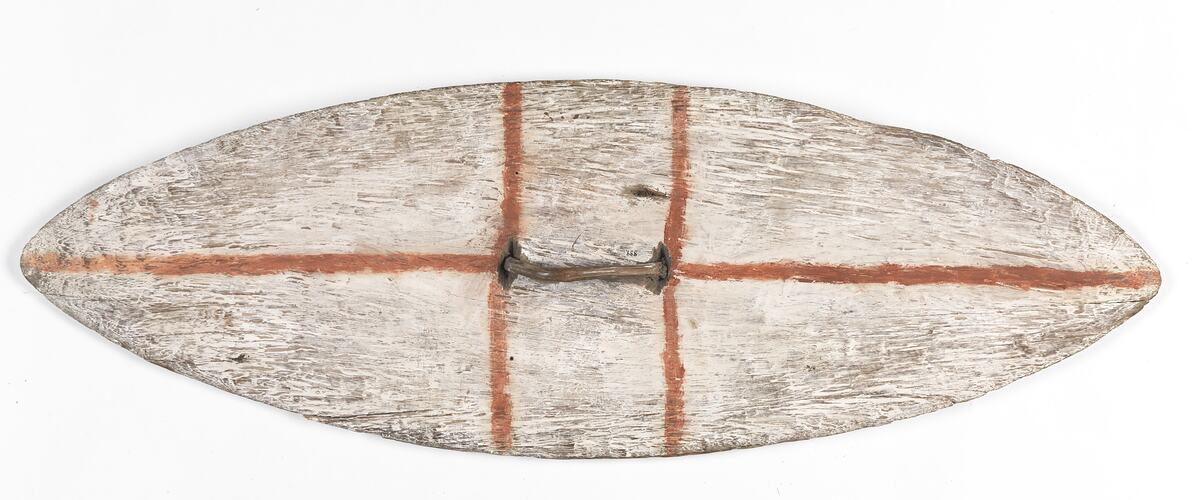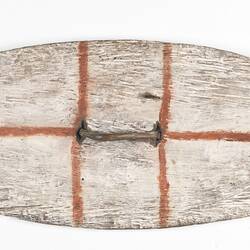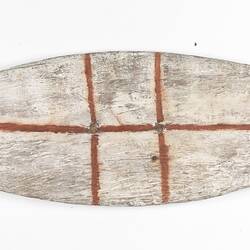Summary
The diversity of iconography and patterning to be found in the designs painted onto objects made and used by Aboriginal people reinforces the strong cultural distinctions that exist across Aboriginal Australia. Pigments of ochres as well as clays are central to the spiritual life and the well-being of Aboriginal people, and this distinctive shield is very unusual in its use of white clay as the major element in its simple yet striking design of a contrasting set of simple vertical and horizontal lines in red ochre.
Physical Description
An oval hardwood shield tapering to a point at each end and decorated with natural pigments. It is coated with white pipe clay and thin lines (one vertical and two horizontal) are painted on with red ochre. The handle is formed of a separate piece of wood secured vertically in the centre.
Significance
The documentation relating to the origins of this extremely rare shield is problematic. Originally the provenance recorded for the shield was Mackay, Queensland however it has been attributed to the area of Sydney north to Port Macquarie based on a style of shield illustrated in nineteenth century plates that depict the 'arms of 'New Holland'. The attribution is consistent with the history of the source from whom the museum gained the shield, Arthur Todd Holroyd (1806-1887), who was a barrister and parliamentarian in the NSW Legislative Council (1851-1856), NSW Legislative Assembly (1856-1857) and for Parramatta (1861-1864). Holroyd migrated to Australia in 1844 and lived in Sydney during his extensive legal and parliamentary career, and given also that he died in 1887, the collection date for this shield by him was likely to have been between the mid-1840s to 1887.
More Information
-
Object/Medium
Shield
-
Maker
-
Locality
-
Date Produced
-
Date Collected
-
Object Measurements
295 mm (Width), 60 mm (Depth), 890 mm (Height)
65,000 Years: A short history of Australian Art. The University of Melbourne.
-
Keywords
-
Collection Names
-
Type of item
-
Discipline
-
Category
-
Collecting Areas


